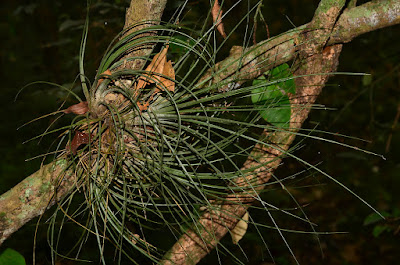Tillandsia juncea is native to South and Central America, Mexico and the West indies. It is found at altitudes up to 2400 meters in Colombia, Venezuela, Ecuador, Peru, Bolivia, eastern Brazil, Cuba, Hispaniola, Jamaica, Trinidad.
Tillandsia juncea, also called as Bonapartea juncea, Misandra juncea, Acanthospora juncea, Platystachys juncea, Tillandsia quadrangularis, Tillandsia juncifolia, is an air plant species of the genus Tillandsia. This species was described by Jean Louis Marie Poiret in 1817.
IDENTIFY TILLANDSIA JUNCEA AIR PLANT
Tillandsia juncea is native to South and Central America, Mexico and the West indies. It is found at altitudes up to 2400 meters in Colombia, Venezuela, Ecuador, Peru, Bolivia, eastern Brazil, Cuba, Hispaniola, Jamaica, Trinidad.
It is a fairly large epiphyte, which reaching up to 50 cm in size, very numerous, supple, fine, silver green leaves that form a rosette. The sheaths are triangular or oval, wider than limb and brown in color.
This air plant blooms from the up to 50 cm long, digitized inflorescence, with several small ears or a single polysic spike, with few flowers. The bracts of the flowering stem are somewhat scaly, nested, reddish, spindly and filiform at the apex. The primary bracts resemble the bracts of the flowering stem, with a long limb forming a small ruff below the inflorescence. The floral bracts are scaly, reddish, leathery and imbricate. The non fragrant flowers are almost sessile, tubular, 4 cm long. The color of the petals varies from dark purple to pale purple. The stamens and the pistil are exserts.
TILLANDSIA JUNCEA AIR PLANT CARE AND CULTURE
Cultural information should only be used as a guide, and should be to be adapted to suit you. Your physical location; where you grow your plants, how much time you have to devote to their care, and many other factors, will need to be taken into account. Only then can you decide on the cultural methods that best suit you and your plants.
Light:
Tillandsia juncea requires a strong luminosity and appreciates the full sun, but you should avoid the afternoon sun in the summer.
Temperature:
The required temperature ranging from 10 to 32°C. Get it early enough in the fall if you grow it outside, so that it does not face night temperatures below 4 or 5 ° C, especially if it is wet. The plants can faced temperatures close to 0 ° C (sheltered and dry) for a few hours without damage.
Humidity:
This species need the moderate level of humidity. Good aeration is required, the plant must dry quickly (in less than an hour). If not, you should find a cooler place.
Substrate, growing media and repotting:
Tillandsia juncea refer to be mounted on a solid substrate that does not retain water. You can glue the plant directly to the surface with a strong adhesive, or you can wire the plant to the base. Don't cover the base of the plant with moss or it may rot. It can be grown on almost any imaginable decorative mount, including shells, rocks, slate, driftwood, etc. Group them in decorative clumps for maximum effect.
Watering:
Twice a week in summer, once a week in winter according to the luminosity and the ambient humidity. Do not over spray it indoors in winter. Obviously when it rains and if you grow it outside, it counts as a watering.
Fertilizer:
This air plant can be fertilized with the moderate doses. 1 to 2 times a month in the summer and 1 time a month in the winter.















COMMENTS